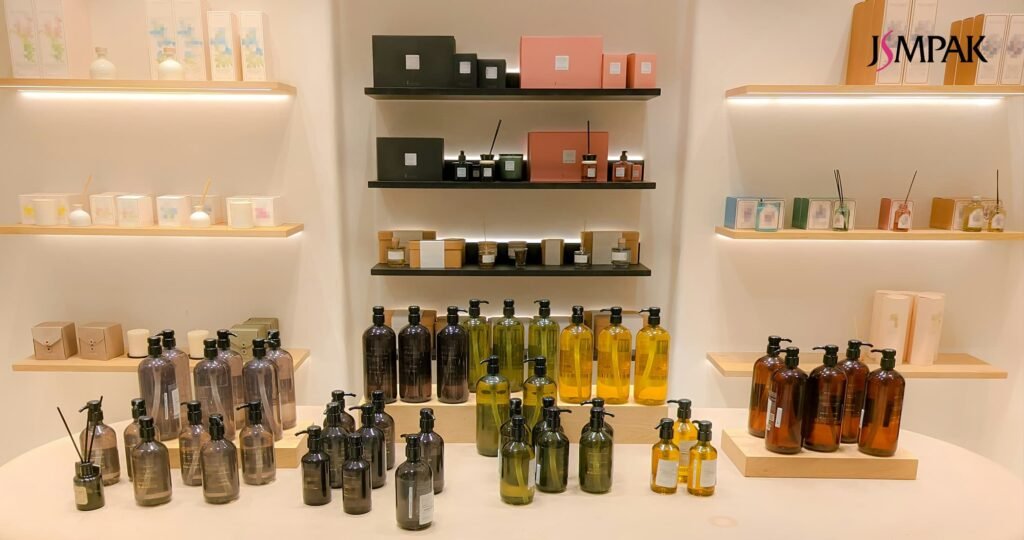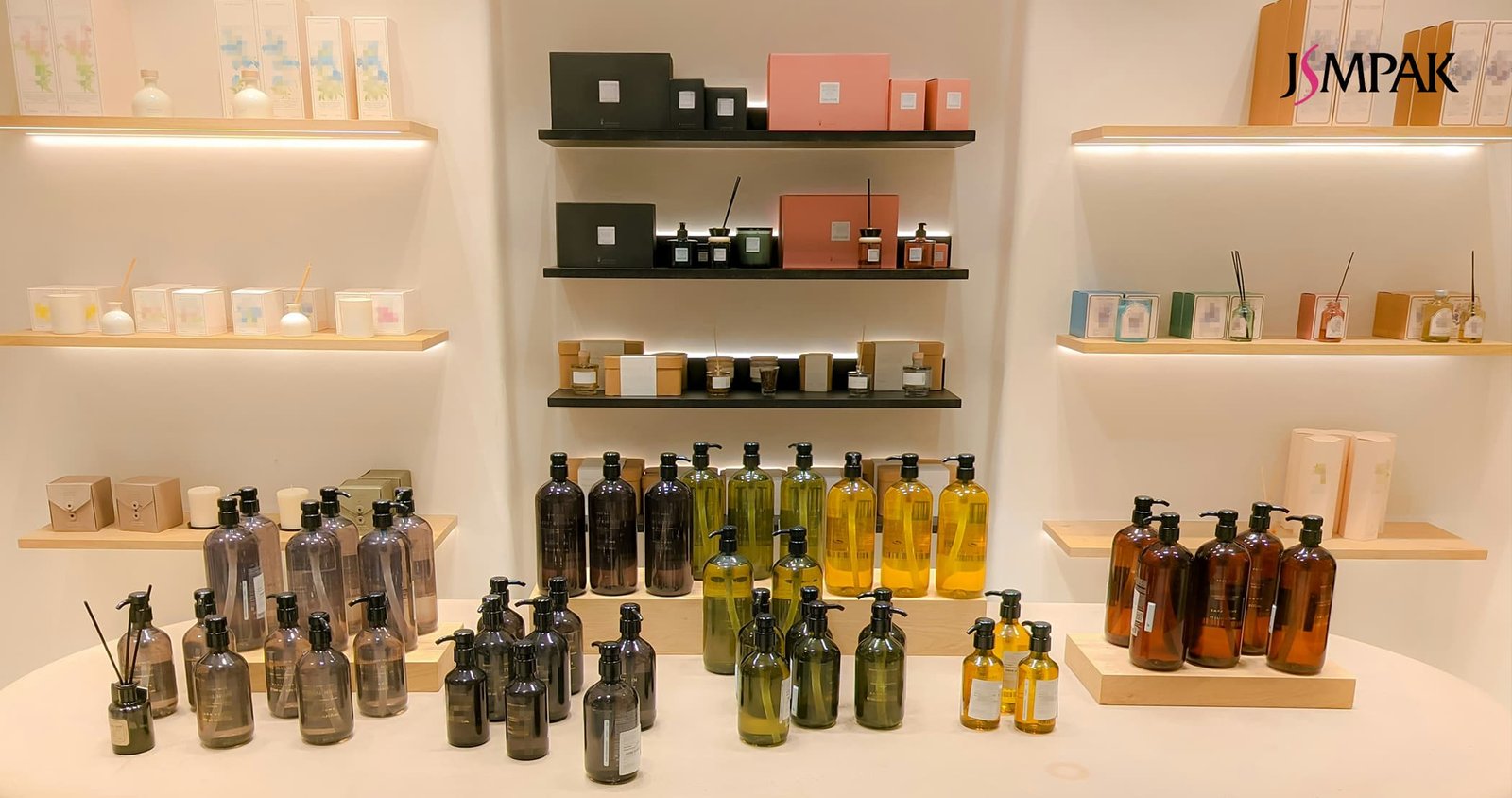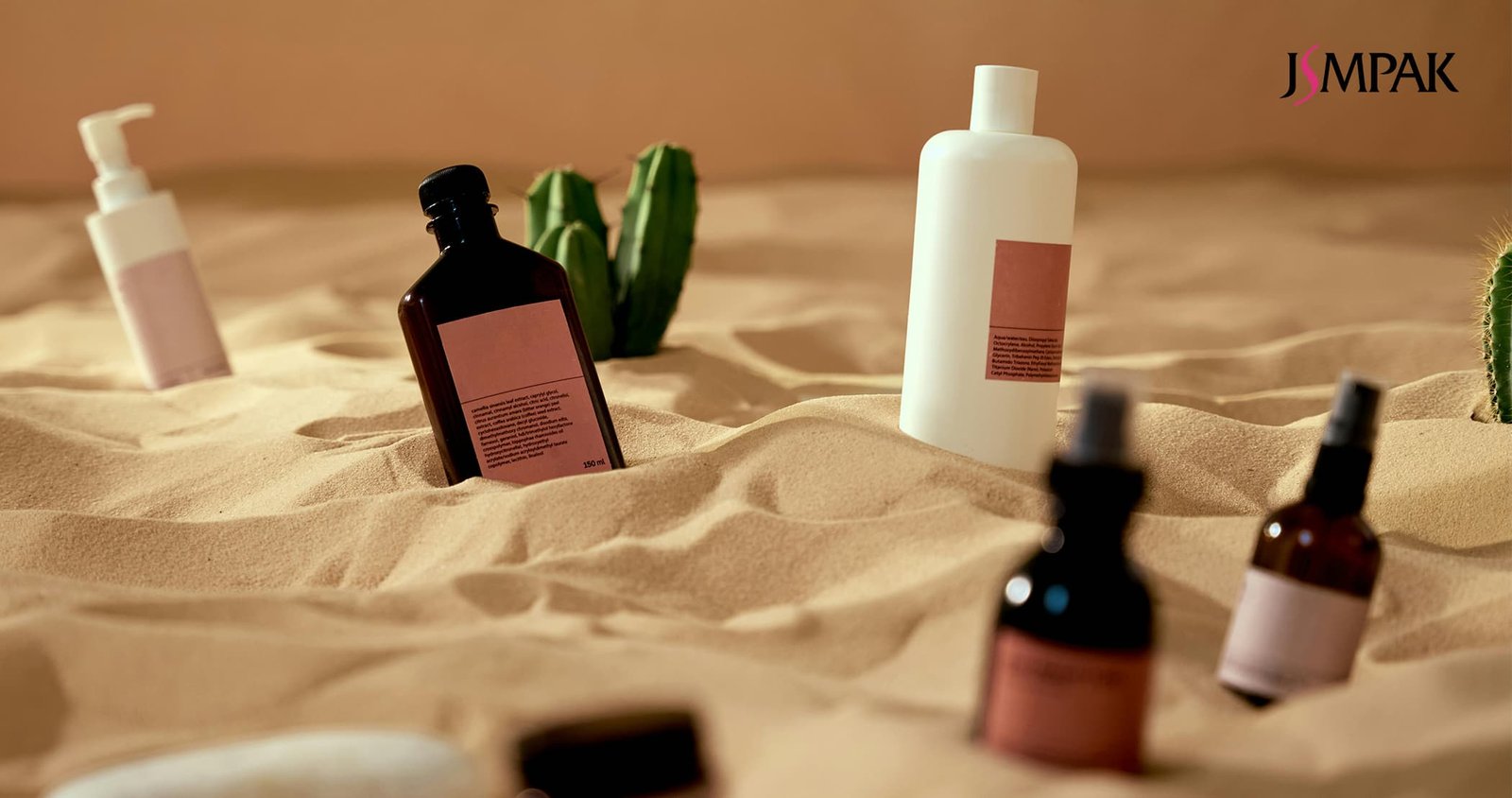Trends in Cosmetics Packaging and Market Demand
As consumers increasingly seek enhanced beauty experiences, the design and functionality of cosmetics packaging have become pivotal elements in brand success. In the contemporary era, small container packaging is no longer merely a simple vessel; it has evolved into a core component closely integrated with the consumer experience and brand identity. From travel-sized products to sample packs, from high-end skincare to everyday makeup, compact and refined packaging not only addresses the needs of consumers for convenience but also serves as a powerful marketing tool for brands.
According to a report by Grand View Research, the global cosmetics packaging market is expected to reach approximately $33 billion by 2027, with small containers (such as 10ml bottles, mini glass bottles, travel-sized packaging, etc) taking on an increasingly important role in the market. People want smaller skincare containers because they are more sustainable and can be customized. For example, data from Statista shows that around 70% of consumers are willing to pay a premium for eco-friendly packaging, which has led to a rise in the use of environmentally friendly materials, such as biodegradable plastics, glass, and aluminum.
Additionally, small cosmetic containers provide brands with more room for innovation, especially in the high-end cosmetics sector. According to Mintel’s consumer report, 60% of consumers prefer to purchase small makeup containers with creative and aesthetically pleasing packaging, particularly those that meet environmental standards and enhance brand image. The younger generations, especially Millennials and Gen Z, place greater emphasis on packaging design, functionality, and sustainability, driving the widespread adoption of small containers in the beauty industry.

Small cosmetic containers are not only a reflection of market demand but also offer brands higher added value. Whether through high-end custom packaging in niche markets or compact containers that provide convenience for everyday consumer use, they help enhance the consumer experience, increase brand competitiveness, and improve market recognition.
As the cosmetics industry continues to evolve toward personalization, sustainability, and convenience, the market prospects for small container packaging are vast, and it is expected to remain a mainstream trend in future packaging design.
Application of Small Containers in the Cosmetics Industry

As consumer demand for convenience, sustainability, and personalization continues to rise, the application of small containers in the cosmetics industry has become increasingly widespread. Whether for travel-sized products, daily skincare routines, or high-end beauty brand packaging, small cosmetic containers play a crucial role.
1. Travel-sized Products
Small containers for travel-sized products offer great convenience to consumers, especially when traveling. Those big cosmetic bottles are a pain to carry around, and they can also cause problems when liquids exceed airline restrictions. I think small cosmetic containers are a great solution to this problem. They make it easy for consumers to carry their daily skincare and cosmetics, which is ideal for people who are traveling and have different needs from day to day. Whether for business trips, vacations, or short getaways, these compact skincare containers can hold essential skincare and makeup products, ensuring that consumers can maintain a flawless appearance and skincare routine even while on the go.
2. Packaging Design for High-End Beauty Brands
For high-end beauty brands, small skincare containers are part of the brand image. Exquisite small packaging reflects the luxury and uniqueness of the brand, meeting consumers’ pursuit of a high-quality lifestyle. A good design makes the product look better and helps people recognize the brand. Through distinctive packaging designs, brands can highlight their unique positioning and stand out in the competitive market.
3. Daily Skincare and Makeup Needs
Small containers also greatly fulfill consumers’ needs for convenience in daily skincare and makeup routines. Many skincare and cosmetic products, such as eye creams, serums, and lipsticks, often require precise control over the amount used. The design of small cosmetic containers perfectly addresses this issue, offering an appropriate capacity while ensuring precise usage each time. For modern consumers, the portability of small container packaging is especially suitable for busy daily life, helping them maintain a polished look and healthy skin anytime, anywhere. Plus, the small makeup containers are super convenient for consumers to carry with them, so they can enjoy the pleasures of skincare and makeup whenever they want.
Product Introduction: Diverse Choices of Small Containers
Small containers play a significant role in cosmetic packaging, with each material, size, and design tailored to meet the specific needs of different cosmetics. Below, we will introduce five types of small makeup containers—perfume atomizers, cosmetic pens, mascara tubes, lipstick tubes, and dropper bottles—focusing on their materials, sizes, and suitability for different needs.

- Material: Perfume atomizers are typically made from glass, aluminum, or plastic. Glass bottles offer a luxurious, high-end feel; aluminum bottles are lightweight with a metallic shine, while plastic bottles are highly biodegradable and environmentally friendly.
- Size: Perfume atomizers usually come in sizes between 3ml and 50ml. Smaller sizes are great for travel, while larger ones are better for everyday use.
- Suitability: Perfume atomizers are designed primarily for high-end fragrance brands. Their exquisite design and pleasant spraying experience enhance the luxury perception of the brand. Smaller perfume bottles are favored for travel and gifts due to their convenience for on-the-go use.

- Material: Cosmetic pens are usually made of plastic or aluminum. They combine the lightness of plastic with the durability of metal. Some high-end cosmetic pens also use eco-friendly materials to meet sustainability requirements.
- Size: Cosmetic pens are customized in different capacity sizes and shapes depending on the product, such as teeth whitening pens, cuticle oil pens, concealer pens, eyebrow pens, or lip gloss pens.
- Suitability: Cosmetic pens are ideal for precise application, catering to detailed makeup needs such as eyeliner, eyebrows, and lip liner. Twist-up and click-style designs offer different user experiences. They are compact and easy to carry, making them ideal for daily makeup and on-the-go use.
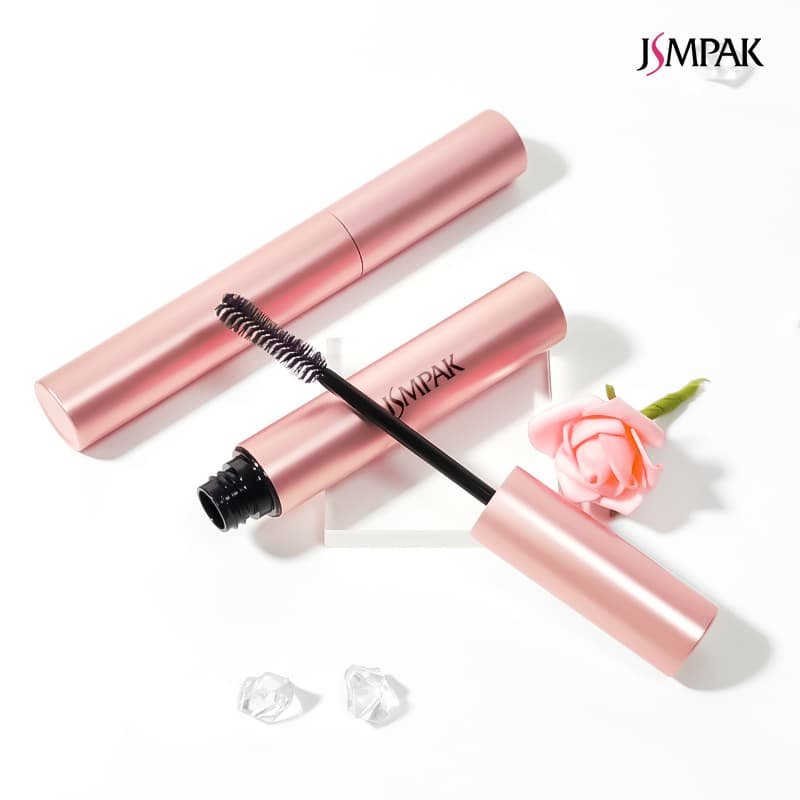
- Material: Mascara tubes are usually made from lightweight plastic, while some premium versions incorporate metal or aluminum alloys to improve the product’s texture and quality.
- Size: Mascara tubes generally have a capacity of 5ml-10ml, with compact designs suitable for single-use or smaller amounts.
- Suitability: Mascara tubes are designed specifically for mascara products. The design pairs the brush with the tube to ensure even application. You can customize brush shapes to enhance various product functions, such as volumizing, lengthening, and waterproofing, thereby addressing the diverse needs of consumers.

- Material: Lipstick tubes are typically made from metal, plastic, or glass. Metal lipstick tubes are luxurious and high-end, while plastic tubes are lightweight and easy to mass-produce. Glass tubes are commonly used for liquid lipsticks, offering a unique glossy finish.
- Size: Lipstick tubes usually range from 3g-5g in capacity, with variations based on the type of lipstick (e.g., regular lipstick, liquid lipstick, lip gloss).
- Suitability: Lipstick tubes are designed for daily use and can be customized according to brand requirements. Their compact size makes them easy to carry, and design styles range from classic to modern. With the growing consumer demand for personalized products, the appearance and materials of lipstick tubes are becoming increasingly diverse.

- Material: Dropper bottles are typically made of glass, a material favored by high-end skincare brands to protect products such as serums and essential oils. Glass not only preserves the integrity of the product but also enhances its premium appearance. Some dropper bottles, however, are made from recyclable plastic, offering an eco-friendly alternative.
- Size: Dropper bottles are commonly available in sizes of 10ml, 15ml, and 30ml. Smaller sizes are ideal for high-concentration serums or oils, while larger sizes are more appropriate for daily skincare use.
- Suitability: Dropper bottles are ideal for premium skincare products such as serums and facial oils. The dropper design allows for precise control of each use, minimizing waste and ensuring consumers can apply the exact amount of product they need. The transparent and minimalist design of dropper bottles showcases the brand’s professionalism and the product’s high-end nature.
With many different materials, sizes, and designs in small makeup containers, cosmetic brands can meet all needs and stand out in a competitive market. From lightweight travel-size bottles to precise serum droppers, we have the perfect packaging solution for your needs. As the market increasingly demands eco-friendly and customized packaging, the design and functionality of small containers are continuously evolving, making them a crucial component of the cosmetics industry.
Why Choose Small Container Packaging

1. Brand Marketing
Small container packaging can effectively attract young consumers because of its delicate and unique design. Nowadays, more and more young people tend to buy cosmetic packaging with exquisite appearance and personality. Small makeup containers make products more portable while also enhancing the brand’s image. Compared to traditional large-volume packaging, small containers create an emotional connection with consumers by bringing brands closer to modern consumer aesthetics and needs through their chic appearance and innovative design.
2. Consumer Experience
Small skincare containers greatly enhance the consumer experience due to their portability and ease of use. Especially when traveling or for daily use, the lightweight packaging allows consumers to enjoy high-quality cosmetics anytime, anywhere. At the same time, the combination of sophistication and functionality makes each use a pleasurable sensory experience. The small containers not only fulfill consumers’ need for convenience but also provide them with a higher level of beauty experience, allowing them to enjoy quality products while feeling the brand’s meticulous care.
ODM & OEM Customization Services

In the fiercely competitive market, brand uniqueness and differentiation often play a key role in attracting consumers. Small container packaging is a crucial part of brand identity. It can enhance a product’s market appeal and further solidify the brand’s professionalism and personalized positioning through customized design and material selection. Our ODM & OEM services are designed to provide clients with comprehensive support from design to production, ensuring every detail is perfectly aligned with customer requirements.
1. Personalized Customization
We offer customization services that are tailored to your brand’s needs. We can help you stand out with packaging design, material selection, and product functionality. We’ll get your small makeup containers looking and working just how you want them to, with your brand style and what your customers want. We collaborate closely with our clients throughout the process—from creative design and product prototyping to final production—ensuring that every detail is meticulously executed to meet customer expectations.
- Unique Design: We create packaging through meticulous design that aligns with the brand image, making it distinctive in the market.
- Material Selection: We offer a variety of material choices, including glass, plastic, metal, and eco-friendly materials, to meet the diverse needs of different product positions and consumer preferences.
- Customized Functionality: For products such as perfume bottles, cosmetic pens, mascara tubes, etc., we provide precise custom solutions based on functional requirements.
2. One-Stop Solution
Our ODM & OEM services go beyond design and customization. We provide a comprehensive solution that includes design, production, and packaging, ensuring a smooth and efficient project workflow. This comprehensive service process reduces the client’s workload, allowing them to focus on brand marketing and product promotion without worrying about packaging design, production, and logistics.
- Design & R&D: We offer innovative design and functional research and development tailored to the client’s needs, ensuring that the packaging highlights the product’s unique features.
- Production & Manufacturing: Equipped with top-tier production facilities and automated production lines, we ensure that the manufacturing process is efficient and precise while capable of large-scale production.
- Packaging & Distribution: We provide packaging solutions that ensure safe transportation and timely delivery of products, helping clients manage their supply chains effectively.
With this one-stop service model, clients can enjoy a more convenient collaboration experience, reducing the time and resource waste associated with
How to Choose the Right Small Container Packaging

In cosmetic packaging, containers protect and deliver products while serving as essential tools for brand communication. Selecting appropriate small container packaging can enhance market competitiveness and align with brand positioning and consumer needs. Below, we will explore how to small container packaging from the perspectives of brand positioning, consumer needs, functionality, and aesthetics.
1. Brand Positioning and Consumer Needs
Choosing small container packaging first requires an understanding of the brand’s market positioning and the needs of its target consumer group. Different brand positioning will influence the direction of packaging design. Luxury brands often highlight sophisticated and distinctive packaging to represent the high value of their products, while mass-market brands prioritize practicality and cost-effectiveness in their packaging.
- Luxury Brand Positioning: For cosmetics brands targeting the high-end market, packaging design must convey a sense of luxury and professionalism. According to a market research report by Cosmetic Business, 75% of consumers believe packaging design is crucial when selecting cosmetics, especially in the luxury and high-end skincare sectors. Upscale brands often choose glass or metal containers with elaborate metal fittings and unique designs, enhancing the product’s value and premium positioning.
- Mass-Market Brand Positioning: Packaging for mass-market brands needs to be practical and cheap. In this market segment, consumers favor products with simple, user-friendly, and affordable packaging. To meet this demand, plastic materials and small-volume packaging are common choices, as they keep production costs low while maintaining convenience and attracting consumer interest. This method lowers packaging costs and makes customers happier and more loyal to the brand.
2. Balancing Functionality and Aesthetics
The balance between functionality and aesthetics is essential in packaging design. Small container packaging must not only meet the practical needs of the product but also capture consumers’ attention, contributing to visual brand communication.
- Functionality Needs: The functionality of packaging determines whether it meets consumers’ requirements for convenience, precision, and durability during use. For instance, dropper bottles used for serums and eye creams should enable precise dosage control, a crucial factor in consumer choice. Similarly, skincare containers such as cosmetic pens and mascara tubes need to have leak-proof designs and be easy to use, ensuring stability during transport and application.
- Aesthetic Needs: Aesthetic design directly influences consumer purchasing decisions, especially in an era driven by visual appeal. According to a survey by Packaging Digest, 64% of consumers would purchase a new product because of its packaging design, particularly when it has strong visual appeal. In small container packaging, through color coordination, unique shape designs, and high-quality material choices, brands can effectively enhance the beauty and recognizability of their packaging, thereby attracting more potential consumers.
3. Environmental and Sustainability Considerations
In today’s global context, where environmental protection and sustainability are increasingly emphasized, more consumers are considering the environmental impact of packaging when selecting cosmetics. According to a study by Nielsen, 73% of millennial consumers said they are more likely to buy products with environmentally friendly packaging. Choosing recyclable, biodegradable, or eco-friendly materials for small container packaging enhances brand image and meets the growing demand from environmentally conscious consumers.
The Future Trends of Small Container Packaging
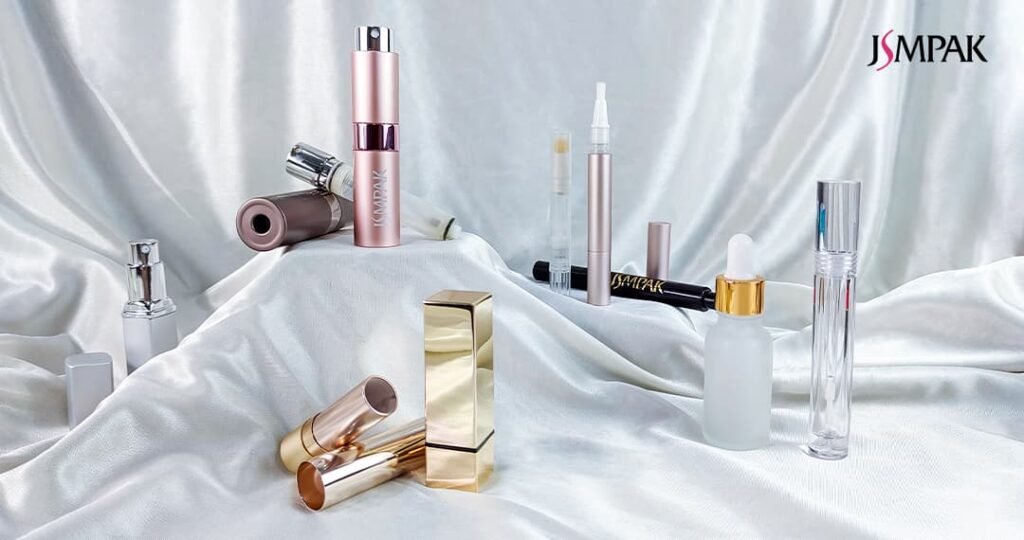
As the beauty industry evolves, small container packaging will continue to play a significant role in addressing the diverse demands of consumers. From luxury to mass-market, consumers want more than just functionality from cosmetic packaging. More and more people are looking at how packaging is made, how it affects the environment, and how it can be designed to suit each needs. Small container packaging, which offers convenience, customizability, and environmental benefits, is poised to play an increasingly important role in the future of beauty packaging.
As environmental awareness grows, biodegradable materials and recyclable packaging solutions will become mainstream trends in the industry. We’re noticing more and more brands moving towards using recyclable or biodegradable materials. It’s a way for them to meet the market’s demand for sustainability while also boosting their corporate social responsibility.
Moreover, the demand for customized packaging is continually increasing, especially for high-end brands, where personalized and differentiated packaging designs will stand out. As consumers become more aware of the value of product identity and brand culture, custom packaging will meet practical needs and help to build stronger emotional connections between brands and consumers.
Consequently, the market potential for small container packaging is substantial. This approach will continue to satisfy consumers’ desires for convenience, practicality, and aesthetics while creating new growth opportunities in the beauty industry through trends in sustainability and customization.

